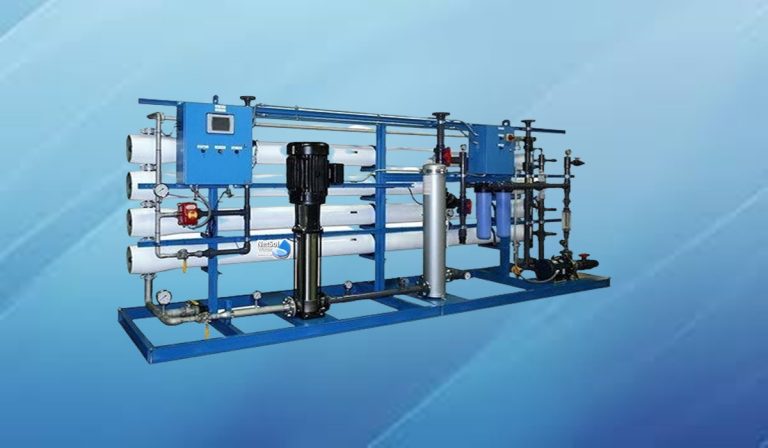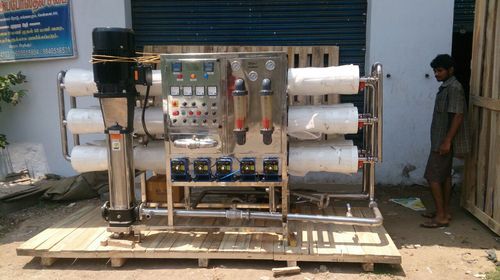
When unfamiliar with the technical language used to explain various aspects of RO system performance and the connections between these operating variables, reverse osmosis (RO) technology can be difficult to understand. Factors that affect the RO Membrane Element is given below:-
How do RO filters work?
Reverse osmosis (RO) filters work differently depending on a variety of conditions. These variables can often be split into two categories: feedwater properties and the system configuration. Different feedwater can alter RO filter’s flow and rejection. The primary variables to take into account are the feed water’s salt concentration, temperature, percent recovery, pH and pressure.
In this blog, we will discuss them in detail.
- Temperature
The operating temperature has a significant impact on the flow of RO permeate. The permeate flow increases with increasing water temperature. This happens as a result of water having less viscosity and a higher diffusion rate at higher temperatures, which makes it simpler for the water to pass through the RO membrane. A typical rule of thumb for elements is that the permeate flow increases by 3% for every 1° C increase in temperature. The majority of membrane suppliers offer temperature correction tables, which enable more precise conversions.
Temperature affects not just how much water is created but also, how much salt can travel through the membrane. The Commercial RO membrane becomes hotter due to the warmer feedwater, which speeds up the process of salt dilution. The salt passage increases roughly twice as much as the increase in water flux because, according to the general rule of thumb, it grows by 6% for every 1° C increase in feedwater temperature.
- Pressure
One must first think about the idea of net driving pressure (NDP) in order to comprehend the effects of altering the feed pressure on a RO filter. The total of all forces operating on the membrane is the “NDP”. Pump or feed pressure, back pressure from line constraints and storage tanks and osmotic pressure of the feed and permeate water may be present.
NDP = Feed pressure – feed osmotic pressure + permeate osmotic pressure
“NDP” is the actual pressure that the membrane experiences while it is in operation. The permeate flow will double if the net driving pressure for a Commercial RO Plant is doubled. Clean water goes through the membrane as the feedwater passes through the RO filter. This raises the pollutants’ concentration in the feedwater, which raises the TDS of the feedwater. As a result, the TDS of the intake feed is always lower than the TDS of the outlet concentrate. Similarly, some reduction in feed pressure is brought on by friction when the water flow passes through the filter and vessel. As a result, there is always a difference between the intake and output pressures.
- Concentration of salt
The salt concentration gradient, which is the difference between the TDS on the feed side of the membrane and the permeate side of the membrane, controls the rate of salt passage over a membrane. Pressure has no impact on the pace of salt flow. The permeate salt concentration does, however, decrease as the feed pressure rises because more permeate water is generated. This happens because the water dissolves the same quantity of salt that diffuses across the membrane.
- Percent recovery
Permeate flow rate divided by feed flow rate multiplied by 100% is the formula for percent recovery. Given that other factors like feed water TDS, operating pressure and feed water temperature are constant, the percent recovery is inversely related to the permeate flow rate and the percent rejection. More water is drained and squandered when the percent recovery is low, but your RO membrane will operate better. In order to balance performance and economics, Netsol Water Solutions, as the Commercial RO Plant manufacturer, typically propose a certain percent recovery rate.
- Effect of pH
Different types of RO membranes can have quite different tolerances to pH. Thin-film composite (TFC) membranes offer higher operational latitude since they are typically stable over a wider pH range than cellulose acetate (CA) membranes. The pH affects the effectiveness of membrane salt rejection. The flow of water may also be impacted. In contrast to CA membranes, stronger, quicker and more efficient cleaning techniques can be applied because of the TFC membrane’s stability over a wide pH range. This is the Factors that affect the RO Membrane Element.
To learn more about our wide range of Commercial RO Plant manufacturers and their maintenance, call us at +91-9650608473 or send an email to enquiry@netsolwater.com.

